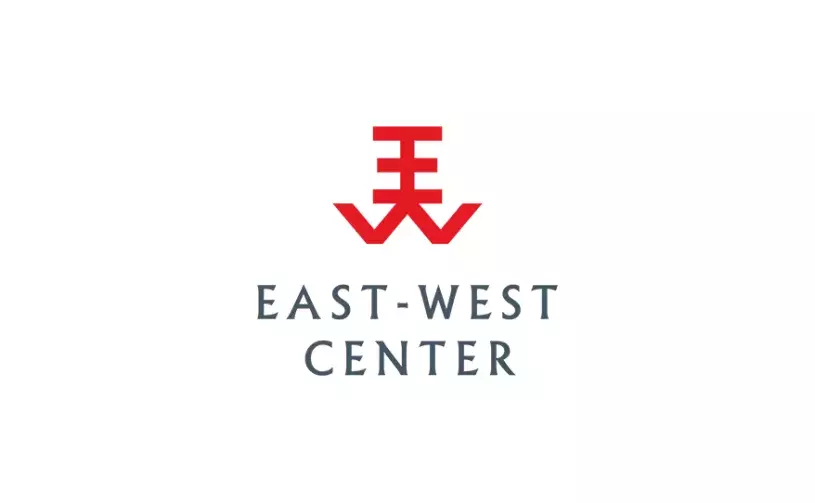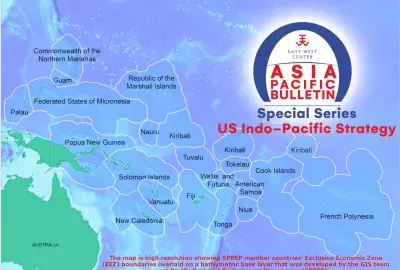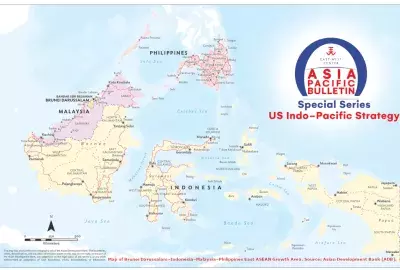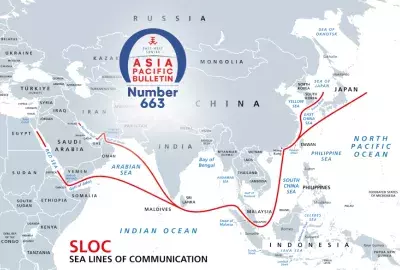Error message

|
Malcolm Cook, Senior Fellow at the ISEAS-Yusof Ishak Institute in Singapore, explains that “Not only did the United States become a larger destination for exports from each Southeast Asian economy, it became a more important one as well." |
Conventional narratives are either supported by facts or overcome them. Recent increased trade flows between the US and the ten economies of Southeast Asia suggest that the predominant narrative of the commercial displacement of the United States by China in Southeast Asia is incorrect. However, the United States’s growing trade deficits and shrinking surpluses with Southeast Asia do bolster an American mercantilist narrative that bilateral deficits are an economic loss for the US caused by Southeast Asian governments’ unfair trade policies.
Neither decline nor displacement
A predominant conventional narrative is that the United States is a declining economic power in Southeast Asia being displaced by China. Trade flows, and more recently Chinese loans for public infrastructure projects in the region, are usually cited for this narrative while the United States’ impressive foreign direct investment (FDI) stock and flows are either discounted or overlooked. The lack of bilateral preferential trade agreements between the United States and Southeast Asian states (excluding Singapore), no US-ASEAN trade deal, and the U.S. withdrawal from the Trans-Pacific Partnership mega-regional trade agreement are presented as malign neglect. More worrisome, inaccurate assessments are used as the primary basis for predictions on and justifications for Southeast Asian states’ current and future strategic choices in relation to the U.S.-PRC strategic rivalry. In fact, Southeast Asian exports to the US are growing.
Table 1: Southeast Asian Exports to USA, $millions
|
|
2013 |
share |
2018 |
share |
growth rate |
|
Brunei |
9 |
0.1% |
57 |
0.9% |
533.3% |
|
Cambodia |
2,079 |
22.5% (#1) |
2,822 |
23.1% (#1) |
35.7% |
|
Indonesia |
15,746 |
8.6% |
18,472 |
10.2% |
17.3% |
|
Laos |
29 |
0.8% |
134 |
2.3% |
362.1% |
|
Malaysia |
18,474 |
8.1% |
22,530 |
9.1% |
22.0% |
|
Myanmar |
11 |
0.1% |
490 |
2.9% |
4354.5% |
|
Philippines |
7,832 |
14.5% |
10,567 |
15.7%(#1) |
34.9% |
|
Singapore |
24,063 |
5.8% |
31,890 |
7.7% |
32.5% |
|
Thailand |
22,587 |
10.1% |
27,809 |
11.1% |
23.1% |
|
Vietnam |
23,869 |
18.5% (#1) |
47,526 |
19.9%(#1) |
99.1% |
Source: CEIC Database https://www.ceicdata.com/en
As shown in Table 1, from 2013 to 2018 the volume of exports to the U.S. market increased significantly for each of the 10 Southeast Asian economies. More importantly, so did the U.S. market share for exports. Not only did the United States become a larger destination for exports from each Southeast Asian economy, it became a more important one as well. In 2018, the United States was the top national export market for three Southeast Asian economies – Cambodia, the Philippines and Vietnam. In volume terms, the doubling of exports to the United States from Vietnam over the last six years is particularly impressive.
The situation for Southeast Asian imports from the United States is less clear and compelling but still undermines the decline and displacement narrative. From 2013 to 2018 the volume and share of imports from the United States grew for six of the ten Southeast Asian economies with particularly strong growth in volume and share in Vietnam. Brunei, Cambodia, Laos and Malaysia saw imports from the U.S. decline in volume; but of these countries only Malaysia is a meaningful US trading partner.
China does appear to be displacing the United States to some extent for Philippine and Brunei imports where imports from China have surged. In total, in 2018, the United States was a larger trading partner for 9 of the 10 Southeast Asian economies (minus Brunei) and a more important trading partner for 8 of 10 (minus Brunei and the Philippines) than in 2013.
Dangerous deficits
Bipartisan concerns in the United States with bilateral trade deficits and “fair” trade are a constant feature of the U.S. post-war approach to international trade and of particular importance for trade with East Asia. The Trump administration has elevated the policy importance of these concerns and sought remedies outside of the slow-moving World Trade Organization (WTO). China has been the primary focus of this approach, but Southeast Asia has come under scrutiny too.
Table 2: US Trade Balances with Southeast Asian Economies, $millions
|
|
2018 U.S. exports |
2018 U.S. imports |
2018 balance |
2013 balance |
|
Brunei |
359 |
57 |
+302 |
+422 |
|
Cambodia |
214 |
2,822 |
-2,608 |
-968 |
|
Indonesia |
10,212 |
18,472 |
-8,259 |
-6,664 |
|
Laos |
16 |
134 |
-118 |
-3 |
|
Malaysia |
15,724& |
22,530 |
-6,808 |
-2,288 |
|
Myanmar |
325 |
490 |
-165 |
101 |
|
Philippines |
7,820 |
10,567 |
-2,747 |
-474 |
|
Singapore |
42,1112 |
31,890 |
+10,222 |
+14,809 |
|
Thailand |
15,053 |
27,809 |
-12,756 |
-8,274 |
|
Vietnam |
12,753 |
47,526 |
-34,773 |
-18,637 |
Source: CEIC Database
As Table 2 shows, U.S. trade flows with each Southeast Asian economy over the last six years has seen the position of the United States worsen in volume terms. The trade surpluses with Singapore and Brunei have shrunk while the surplus with Myanmar has turned into a deficit. The 2018 trade deficits with the other seven Southeast Asian economies are significantly larger in volume terms than in 2013.
From 2013 to 2018 only Vietnam saw its share of imports from the US grow more quickly than the share of exports to the United States making Vietnam the only Southeast Asian economy where the U.S. trading position has improved in relative terms. Despite this, the large size and growth in volume of the United States. trade deficit with Vietnam increases Vietnam’s risk of facing U.S. trade remedy measures. The growth in the U.S. trade deficit with the Philippines and the decline in importance of the United States as a source of imports is a risk for the Philippines. The Duterte administration responded positively to the Trump administration’s call to start negotiations on a bilateral preferential trade agreement—though this is likely to be a drawn out effort.
The United States is an increasingly large and important trading partner for Southeast Asia which is good for the United States and Southeast Asia. More bilateral trade agreements between the United States and Southeast Asian states could further improve U.S. exports to Southeast Asian economies and reduce the risks for Southeast Asian economies associated with rising trade surpluses with the US.
|
Malcolm Cook, Senior Fellow at the ISEAS-Yusof Ishak Institute in Singapore, explains that “Not only did the United States become a larger destination for exports from each Southeast Asian economy, it became a more important one as well." |
Conventional narratives are either supported by facts or overcome them. Recent increased trade flows between the US and the ten economies of Southeast Asia suggest that the predominant narrative of the commercial displacement of the United States by China in Southeast Asia is incorrect. However, the United States’s growing trade deficits and shrinking surpluses with Southeast Asia do bolster an American mercantilist narrative that bilateral deficits are an economic loss for the US caused by Southeast Asian governments’ unfair trade policies.
Neither decline nor displacement
A predominant conventional narrative is that the United States is a declining economic power in Southeast Asia being displaced by China. Trade flows, and more recently Chinese loans for public infrastructure projects in the region, are usually cited for this narrative while the United States’ impressive foreign direct investment (FDI) stock and flows are either discounted or overlooked. The lack of bilateral preferential trade agreements between the United States and Southeast Asian states (excluding Singapore), no US-ASEAN trade deal, and the U.S. withdrawal from the Trans-Pacific Partnership mega-regional trade agreement are presented as malign neglect. More worrisome, inaccurate assessments are used as the primary basis for predictions on and justifications for Southeast Asian states’ current and future strategic choices in relation to the U.S.-PRC strategic rivalry. In fact, Southeast Asian exports to the US are growing.
Table 1: Southeast Asian Exports to USA, $millions
|
|
2013 |
share |
2018 |
share |
growth rate |
|
Brunei |
9 |
0.1% |
57 |
0.9% |
533.3% |
|
Cambodia |
2,079 |
22.5% (#1) |
2,822 |
23.1% (#1) |
35.7% |
|
Indonesia |
15,746 |
8.6% |
18,472 |
10.2% |
17.3% |
|
Laos |
29 |
0.8% |
134 |
2.3% |
362.1% |
|
Malaysia |
18,474 |
8.1% |
22,530 |
9.1% |
22.0% |
|
Myanmar |
11 |
0.1% |
490 |
2.9% |
4354.5% |
|
Philippines |
7,832 |
14.5% |
10,567 |
15.7%(#1) |
34.9% |
|
Singapore |
24,063 |
5.8% |
31,890 |
7.7% |
32.5% |
|
Thailand |
22,587 |
10.1% |
27,809 |
11.1% |
23.1% |
|
Vietnam |
23,869 |
18.5% (#1) |
47,526 |
19.9%(#1) |
99.1% |
Source: CEIC Database https://www.ceicdata.com/en
As shown in Table 1, from 2013 to 2018 the volume of exports to the U.S. market increased significantly for each of the 10 Southeast Asian economies. More importantly, so did the U.S. market share for exports. Not only did the United States become a larger destination for exports from each Southeast Asian economy, it became a more important one as well. In 2018, the United States was the top national export market for three Southeast Asian economies – Cambodia, the Philippines and Vietnam. In volume terms, the doubling of exports to the United States from Vietnam over the last six years is particularly impressive.
The situation for Southeast Asian imports from the United States is less clear and compelling but still undermines the decline and displacement narrative. From 2013 to 2018 the volume and share of imports from the United States grew for six of the ten Southeast Asian economies with particularly strong growth in volume and share in Vietnam. Brunei, Cambodia, Laos and Malaysia saw imports from the U.S. decline in volume; but of these countries only Malaysia is a meaningful US trading partner.
China does appear to be displacing the United States to some extent for Philippine and Brunei imports where imports from China have surged. In total, in 2018, the United States was a larger trading partner for 9 of the 10 Southeast Asian economies (minus Brunei) and a more important trading partner for 8 of 10 (minus Brunei and the Philippines) than in 2013.
Dangerous deficits
Bipartisan concerns in the United States with bilateral trade deficits and “fair” trade are a constant feature of the U.S. post-war approach to international trade and of particular importance for trade with East Asia. The Trump administration has elevated the policy importance of these concerns and sought remedies outside of the slow-moving World Trade Organization (WTO). China has been the primary focus of this approach, but Southeast Asia has come under scrutiny too.
Table 2: US Trade Balances with Southeast Asian Economies, $millions
|
|
2018 U.S. exports |
2018 U.S. imports |
2018 balance |
2013 balance |
|
Brunei |
359 |
57 |
+302 |
+422 |
|
Cambodia |
214 |
2,822 |
-2,608 |
-968 |
|
Indonesia |
10,212 |
18,472 |
-8,259 |
-6,664 |
|
Laos |
16 |
134 |
-118 |
-3 |
|
Malaysia |
15,724& |
22,530 |
-6,808 |
-2,288 |
|
Myanmar |
325 |
490 |
-165 |
101 |
|
Philippines |
7,820 |
10,567 |
-2,747 |
-474 |
|
Singapore |
42,1112 |
31,890 |
+10,222 |
+14,809 |
|
Thailand |
15,053 |
27,809 |
-12,756 |
-8,274 |
|
Vietnam |
12,753 |
47,526 |
-34,773 |
-18,637 |
Source: CEIC Database
As Table 2 shows, U.S. trade flows with each Southeast Asian economy over the last six years has seen the position of the United States worsen in volume terms. The trade surpluses with Singapore and Brunei have shrunk while the surplus with Myanmar has turned into a deficit. The 2018 trade deficits with the other seven Southeast Asian economies are significantly larger in volume terms than in 2013.
From 2013 to 2018 only Vietnam saw its share of imports from the US grow more quickly than the share of exports to the United States making Vietnam the only Southeast Asian economy where the U.S. trading position has improved in relative terms. Despite this, the large size and growth in volume of the United States. trade deficit with Vietnam increases Vietnam’s risk of facing U.S. trade remedy measures. The growth in the U.S. trade deficit with the Philippines and the decline in importance of the United States as a source of imports is a risk for the Philippines. The Duterte administration responded positively to the Trump administration’s call to start negotiations on a bilateral preferential trade agreement—though this is likely to be a drawn out effort.
The United States is an increasingly large and important trading partner for Southeast Asia which is good for the United States and Southeast Asia. More bilateral trade agreements between the United States and Southeast Asian states could further improve U.S. exports to Southeast Asian economies and reduce the risks for Southeast Asian economies associated with rising trade surpluses with the US.







